Spicy Japanese food? Wait, isn’t that a total contradiction? Sure, there’s a common perception that Japanese cuisine doesn’t feature fiery flavors. Well, apart from the ubiquitous wasabi, of course. But there’s more jazz in Japanese than you may realize.
While it is certainly true that Japan’s national cuisine doesn’t pack the same sort of heat as other Asian cuisines, and there’s a general preference to let the natural flavors of ingredients stand on their own, there are notable exceptions. One condiment, in particular, is sure to delight those who crave a hotter experience at mealtime.
Shichimi togarashi, often referred to simply as shichimi and meaning “seven flavors,” is a blend of — you guessed it! — seven different spices. In this post, we’ll reveal every ingredient of this popular Japanese spice mix, and explain how the spicy condiment came to sit on the table of nearly every noodle restaurant in Japan.
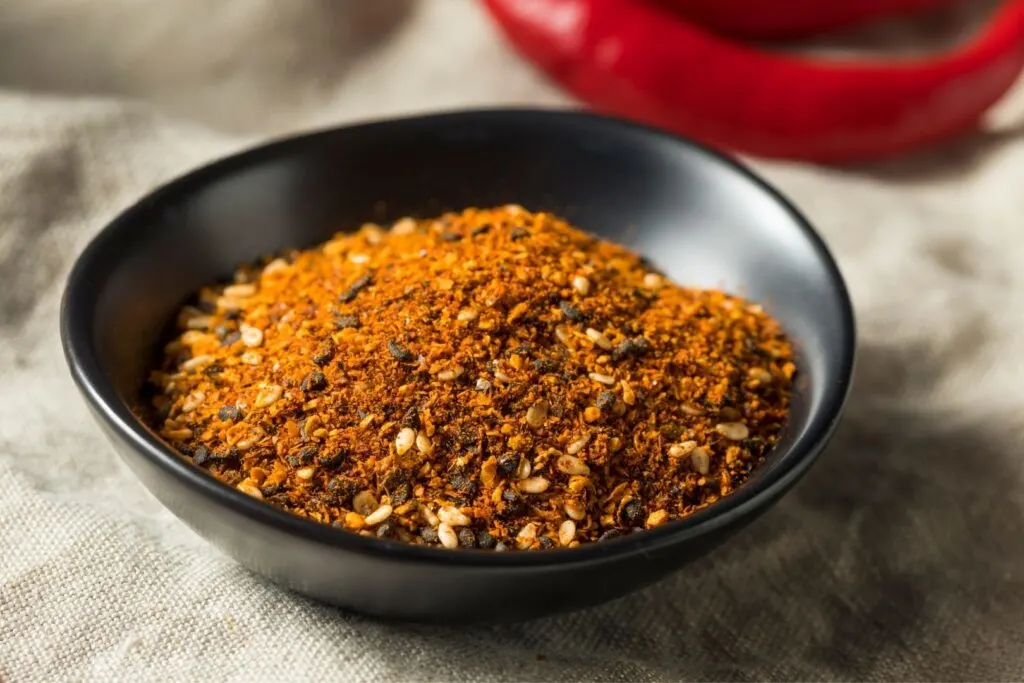
Table of Contents
What is shichimi and how is it used?
Shichimi tōgarashi (しちみ・とうがらし — 七味唐辛子) is the official name of this Japanese spice blend, and it is the second word that clues us in on its spiciness. Togarashi is the Japanese name for Capsicum annuum, a red pepper native to Central and South America that made its way to Europe in the 15th century, and from there spread along trade routes to Asia. It’s this spicy little number that makes shichimi hot.
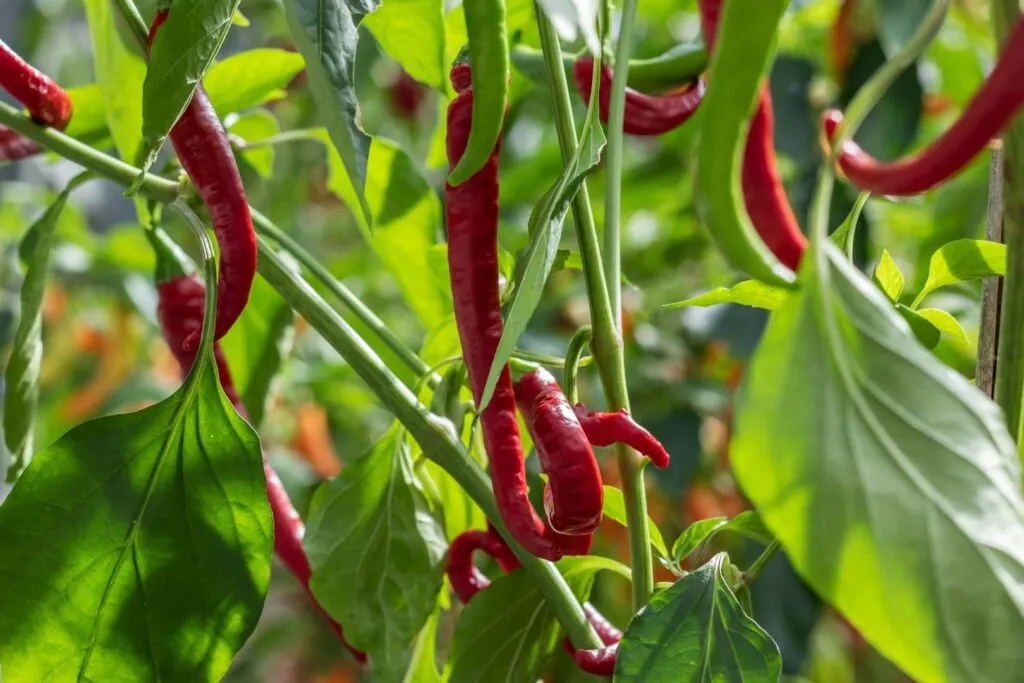
Interestingly, the first kanji character in togarashi (唐) – the ‘to’ part – indicates “from China” but really means “foreign,” a linguistic leftover from a time when most imports entered Japan from China. (In the late 19th century, even foreigners from North America and Europe were called tōjin in Japan; the words “gaikokujin” and “gaijin” came later. The suffix “-jin” is a describer meaning “-person.”)
Shichimi is usually provided at the table so diners can add it to taste. It’s most commonly offered as a condiment for Japanese noodle dishes including soba and udon, but lots of people sprinkle it on gyudon (flavored beef on rice), yakitori, traditional stews and miso soup. You can also use it on pickles, grilled chicken and meat, and even on pasta.
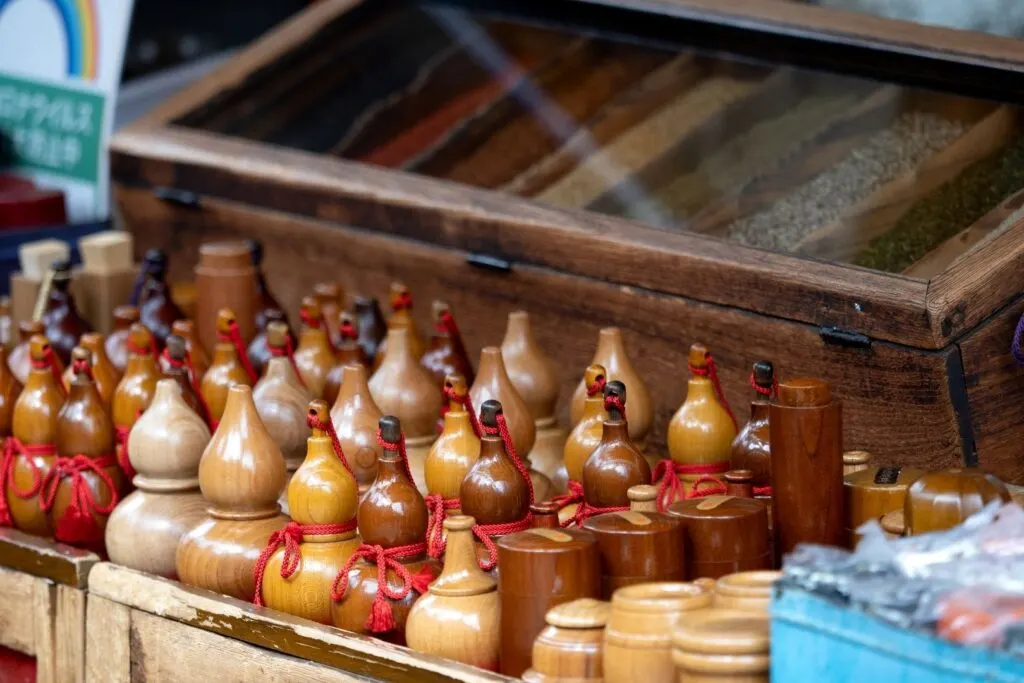
How did Capsicum annuum end up in Japan?
While we don’t know for sure, Portuguese missionaries may have introduced C. annuum to Japan around 1605. Another theory is that Japanese troops brought it back in 1592, when they returned from a military expedition to the Korean peninsula led by the famous general Toyotomi Hideyoshi.
What we do know is the piquant import was grown in Japan from around 1610 but was initially used only as a medicine. Then in 1625 a merchant in Edo (present-day Tokyo) decided to blend it with other seeds and herbs with medicinal properties and try marketing the mix as a healthy yet tasty additive for food.
What are the ingredients in this Japanese 7-spice mix?
The product proved a real success, and the company he founded, Yagenbori Shichimi Togarashi, is still in business nearly 400 years later. There is no single, universally accepted recipe for shichimi togarashi but Yagenbori uses these seven ingredients:
– black sesame seeds
– the dried peel of the unshū mikan (Satsuma orange)
– Japanese sansho pepper
– dried capsicum
– roasted dry capsicum
– hemp seeds
– poppy seeds
Yagenbori is so famous in Japan that your Japanese friends will almost certainly know of it, along with two other celebrated suppliers: Shichimiya Honpo, in business since 1655 near Kiyomizu temple in Kyoto, and Yawataya Isogoro, founded in 1720 and down the street from the Zenkoji temple in Nagano.
Each company has its own way of making shichimi. Shichimiya’s blend, for example, includes dried shisho (perilla leaves), while Yawata’s contains ginger and aonori seaweed. All three of these famous shichimi contain exactly seven ingredients.
There are, however, companies that make a shichimi-like blend of eight ingredients, which they call “hachimi” (八味, eight flavors). And it’s quite common to come across bottles of straight red-pepper flakes which are sold as “ichimi” (一味, one flavor).
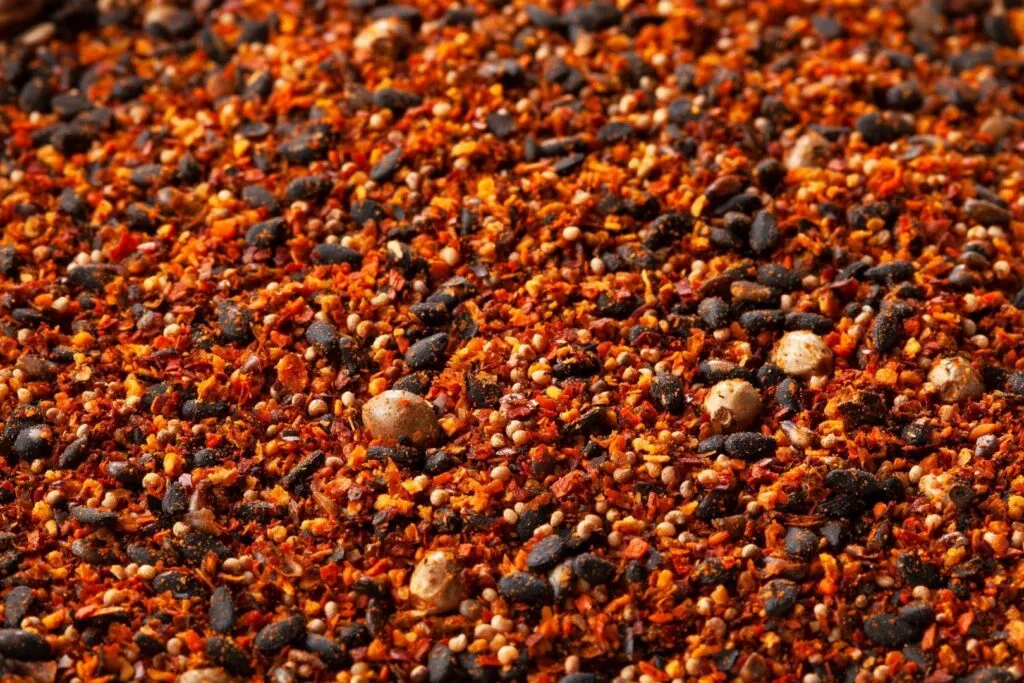
Where to buy your own custom blend of shichimi togarashi in Tokyo
I am a regular visitor to Yagenbori’s retail shops in Asakusa, where they continue to sell their original chūkara medium-spicy blend, as well as an ōgara extra spicy blend and a kogara mild version.
You can also have them mix up a custom batch to your personal specifications. I am generally looking for aroma more than heat, so I ask them to leave out the regular capsicum in favor of the more fragrant roasted variety and request extra sansho and sesame. They’ll pack this into a resealable foil packet for optimum storage.
They call this chōgō hanbai (調合販売, “sold by formulation”) or okonomi chōgō (お好み調合, “blended to your taste”). If you don’t speak Japanese, just say the English words “order made,” which are widely understood in Japan. A custom shichimi blend costs 540 yen for 27 grams.* (Please note this service is temporarily unavailable due to the coronavirus).
The store also sells the distinctive wooden containers traditionally used for storing and serving shichimi. There are three basic shapes: an upright tube called take (bamboo); a squat, round container called taru (barrel), and my personal favorite, the hyōtan (gourd).
When buying shichimi togarashi, remember that capsicum is highly sensitive to heat and light, so it’s best to keep only a small amount handy for daily use, and store the rest in the refrigerator or freezer. Fresh is always better when it comes to shichimi, so be sure to replace any dusty old bottles you find lurking at the back of your kitchen cupboard.
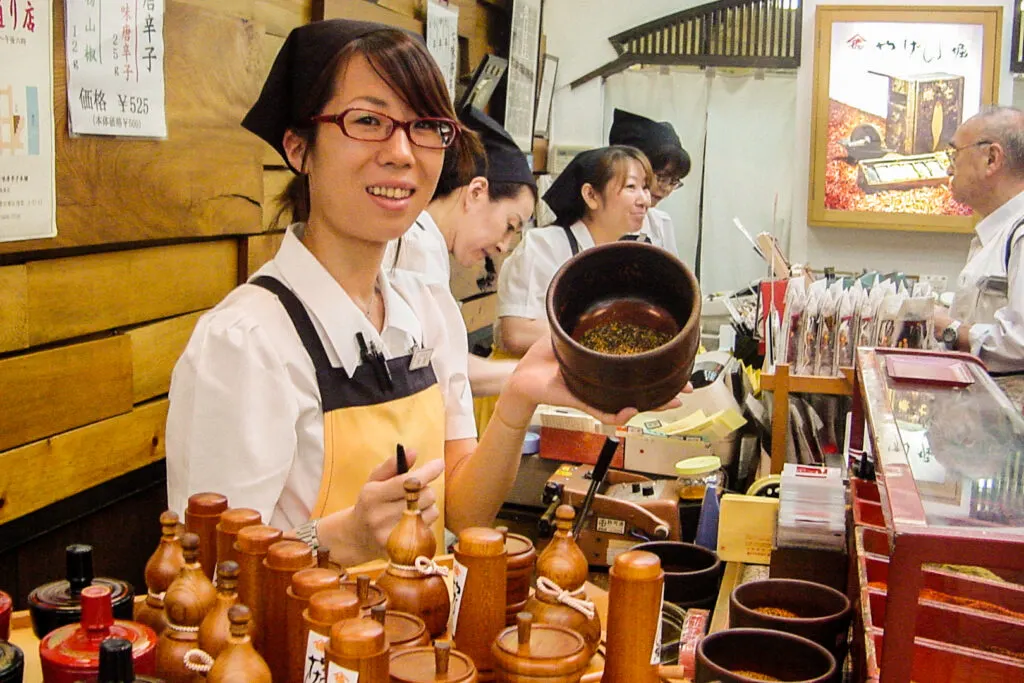
How to access Yagenbori Shichimi Togarashi: Yagenbori has two shops in Tokyo’s Asakusa district near Sensōji Temple (also called Asakusa Kannon Temple), one of the most popular tourist destinations in Japan: the main shop on the Shin-Nakamise-dori shopping street, and a satellite shop on the nearby Metro shopping street. Both are easily identified by their facades that look like a tiled temple roof and both offer custom blending. I recommend the main shop because it is open every day with regular hours, whereas the Metro shop has irregular closings.
To visit the main shop, take the Ginza subway line to Asakusa station. Exit 6 puts you in the Shin-Nakamise-dori covered shopping arcade. Turn left and proceed west about 300 meters, crossing two intersections, the Nakamise shopping street that leads directly to the temple and Orenji-dori (Orange Street). Yagenbori is on the right shortly after the second crossing. 1-28-3 Asakusa, Taito-ku, Tokyo Tel 03-3841-5690. Open 10 am to 6 pm, every day of the year. (The Metro shop is closed some Wednesdays and other days on an irregular schedule; there’s a calendar on the Japanese website but it may be hard to find and navigate).
*The custom-blend service is temporarily suspended in-shop due to the coronavirus; check back for updates.
Have you ever tried shichimi togarashi? Would you?
Pin me for later
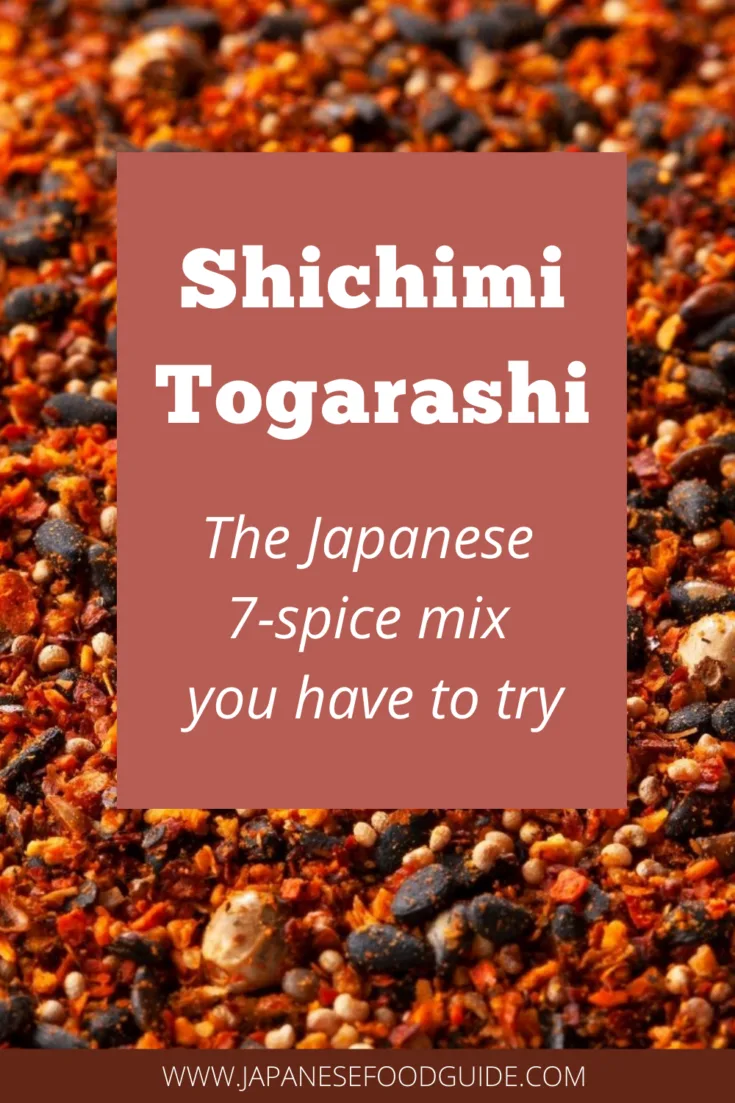
Alice Gordenker is a Tokyo-based writer. She started her career in journalism reporting from Washington, DC for food industry trade publications on regulation and legislation. Since relocating to Tokyo more than 20 years ago, Alice has made it her “life work” to provide insight on Japan through various media including newspapers, magazines, television and film.
She is delighted to be an early contributor to Japanese Food Guide, where she can once again focus on great things to eat, and how they are grown or made.

Lisa
Saturday 3rd of July 2021
This was so informative! I use shichimi a fair bit but never really gave its ingredients much thought. I am 100% making a beeline for Yagenbori Shichimi Togarashi's main store once things settle down to make my own custom-made mix.